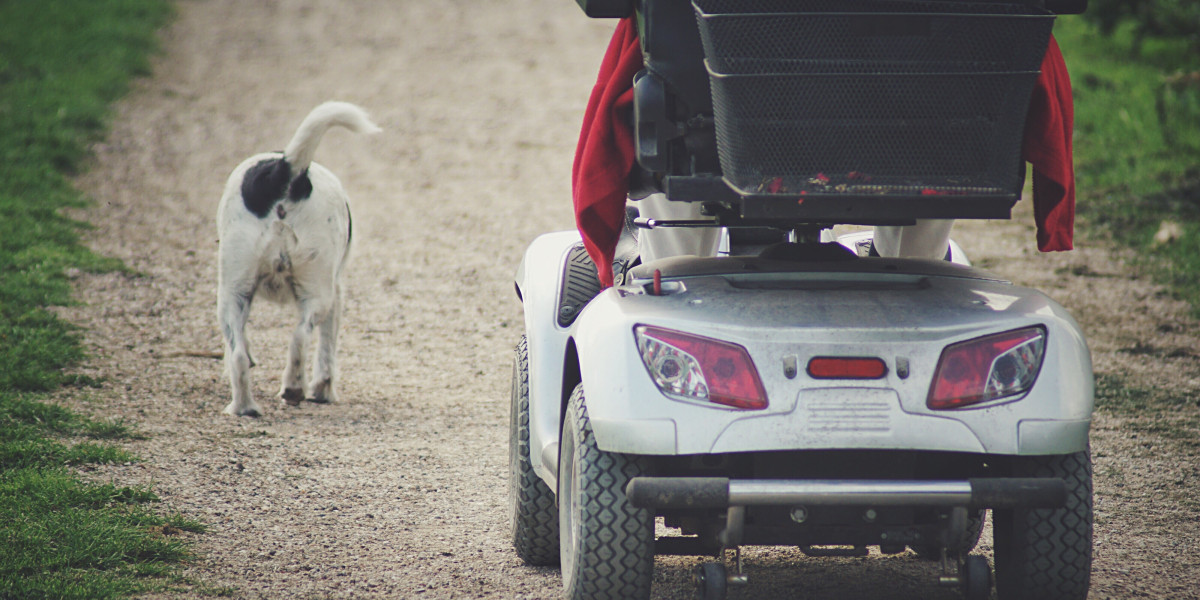Mobility Scooter - Choosing the Right Mobility Scooter
We assist people who have limited mobility maintain their independence by providing mobility scooters. These mobility scooters are mainly funded through the Motability scheme, and can only be used by disabled individuals.
It can be difficult to pick the right scooter among the various models available. The best model for you will depend on many aspects, including mobility and capabilities for terrain.
What is a mobility scooter?
A mobility scooter is an electric powered vehicle that functions as a wheelchair for people who are unable to walk or who are unable to walk. They are typically powered by rechargeable batteries, and come with either pneumatic, foam-filled or solid wheels, based on the model. They are classified as Class 2, which can only be used on pavements at speeds of up to 4mph. Also, Class 3 which can be used on roads and pavements but requires a driving license.
As there are a huge variety of models available on the market, choosing the best one for your specific needs can be an overwhelming task. We've put together an outline of the key features to look for to help.
If you are looking for a model with a smaller turning radius and a lighter 3 wheeler that allows you to maneuver on smooth surfaces. This will allow you to have the most maneuverability. These models are also the cheapest.
Think about a scooter with adjustable seat width and height to meet your changing requirements. This allows you to ride comfortably and stay steady, particularly when you're crossing obstacles or on steep terrain.
Check that the model you are considering has essential safety features such as robust brake systems, horns and reflectors to ensure you are visible in low-light or busy areas. Some scooters are equipped with additional security measures such as the lock to stop it from being stolen.
Make sure the scooter has a battery life that meets your daily requirements and lets you move comfortably. The longer the battery life is, the more miles you will get on a single charge. You can also opt for an electric scooter with an easily replaceable battery for replacement. The weight of the scooter can be a significant factor in the storage and transportability options. Some scooters can be disassembled and folded to make it easier for transportation and storage. Some scooters have a maximum weight limit.
Class 2 Scooters
If you're seeking a mobile scooter that can help you get around on flat, paved surfaces then Class 2 scooters, also referred to as pavement or boot scooters, could be the best option. These models are smaller and more maneuverable and can reach speeds up to 4 mph. They are perfect for shopping trips as well as daily use. As opposed to Class 3 scooters, they don't need to be registered with the Driver and Vehicle Licensing Agency (DVLA).
When selecting your new mobility scooter, it is important to take into consideration a range of factors including the terrain you will be covering as well as the amount of distance you intend to travel. Depending on the level of comfort you require, consider the suspension system of your scooter and dimensions of the seat. Find models with transparent displays and simple controls. It's also worth considering the battery's maximum life and charging duration, as these will affect how long you can go between charges.
It's important to remember that certain scooters in the class 2 scooters can be disassembled to store and transport. In addition, a lot of retailers provide a special service to help customers with this process.
Although it is possible to buy second-hand mobility scooter uk scooters, we recommend working with a trusted retailer to verify the condition and quality of the item you're purchasing. Verify that the retailer has been authorized to sell mobility scooters.
It is common to see new scooter owners are nervous about their new ride. It's important to choose an option that is easy and easy to drive. To ensure a pleasant ride look for features such as easy-to-read controls, low-speed settings and a good turn radius. Check that the business you are purchasing the scooter from is a participant in an national program that permits you to bring mobility scooters on their buses. To achieve this, you'll require a permit from your local bus operator.
Class 3 Scooters
When choosing a mobility scooter there are two categories that you can choose from. Scooters in Class 2 and 3. The distinction between them could be subtle but it is vital for those who plan to use their scooters on roads. Class 2 scooters are permitted to be used on footpaths and pavements, but not on the road. They are not required to register with the DVLA or pay a tax on vehicles. However, they might be able to benefit from having additional features that make them safer to drive on roads, like indicators and rear view mirrors and danger lights.
The type of scooter the best for you will be based on your individual requirements and the distances you travel. While a class 2 scooter is useful for short trips and indoors Class 3 scooters offer the speed, flexibility, and legal compliance that those who wish to travel for long distances will require.
Class 3 mobility scooters were developed for people who want to explore their community, visit friends, or shop without being restricted by walking. These scooters are larger and more powerful than the class 2 models, making them ideal for those who like to travel for longer distances. These vehicles are legal to go up to 8 mph which is much faster than their class 2-companies.
Class 3 scooters come with additional features, such as a rearview mirror, LED headlights and an indicator. These features make them safer and more comfortable to ride on the road. Included in this are a rearview mirror and LED front headlights. an indicator, and a rearview-mirror. They can be equipped with high-pitched horns to ensure the safety of other drivers.
Consider the weight capacity when choosing a class 3 scooter. It's crucial to choose the model that is safe to support your weight. You should also evaluate the battery range to make sure that it's capable of covering the typical distances you travel. In addition, it's important to test the scooter prior buying it to ensure that it meets your specific needs and offers a comfortable ride.
Buying a scooter
Mobility scooters can be a life-changing piece equipment for those who have limitations or a reduced ability to walk. They enable the user to go out and about independently when they're completing the streets or visiting family and friends. Before purchasing one, make sure you are aware of the rules and regulations.
In the UK in the United Kingdom, these vehicles (alongside powered wheelchairs) are classified into two categories: Class 2 invalid carriages and Class 3 invalid wagons. Class 2 scooters are not able to be driven off-road and may only be used on pavements. Class 3 scooters, however, are allowed to travel up to eight speeds on roads and can be driven.
The NHS may offer these vehicles at no cost for those who meet certain criteria. This is decided on a case-by case basis and is generally dependent on the person's mobility requirements and how it has affected their daily lives. In addition, there are also specialist charities that can help with the cost of a mobility scooter, such as Blesma.
It is best to talk with a dealer when choosing the right mobility device. They can provide you with the various choices, the costs and advantages of each product to ensure that you choose the best mobility scooter for your needs. They can even deliver a selection of products to your home for you to test.
After you've decided on your scooter it's always a good idea to get it insured. Third party insurance, even though it's not legally required in the UK is a sensible choice that can protect you if there's an accident. It can also cover your scooter's replacement cost if it is damaged or stolen.
At Pro Rider, we have hundreds of mobility scooters on hand and can offer a wide range of models to suit all needs. We can also carry out repairs, modifications, and servicing to ensure that you get the most out of your equipment.



